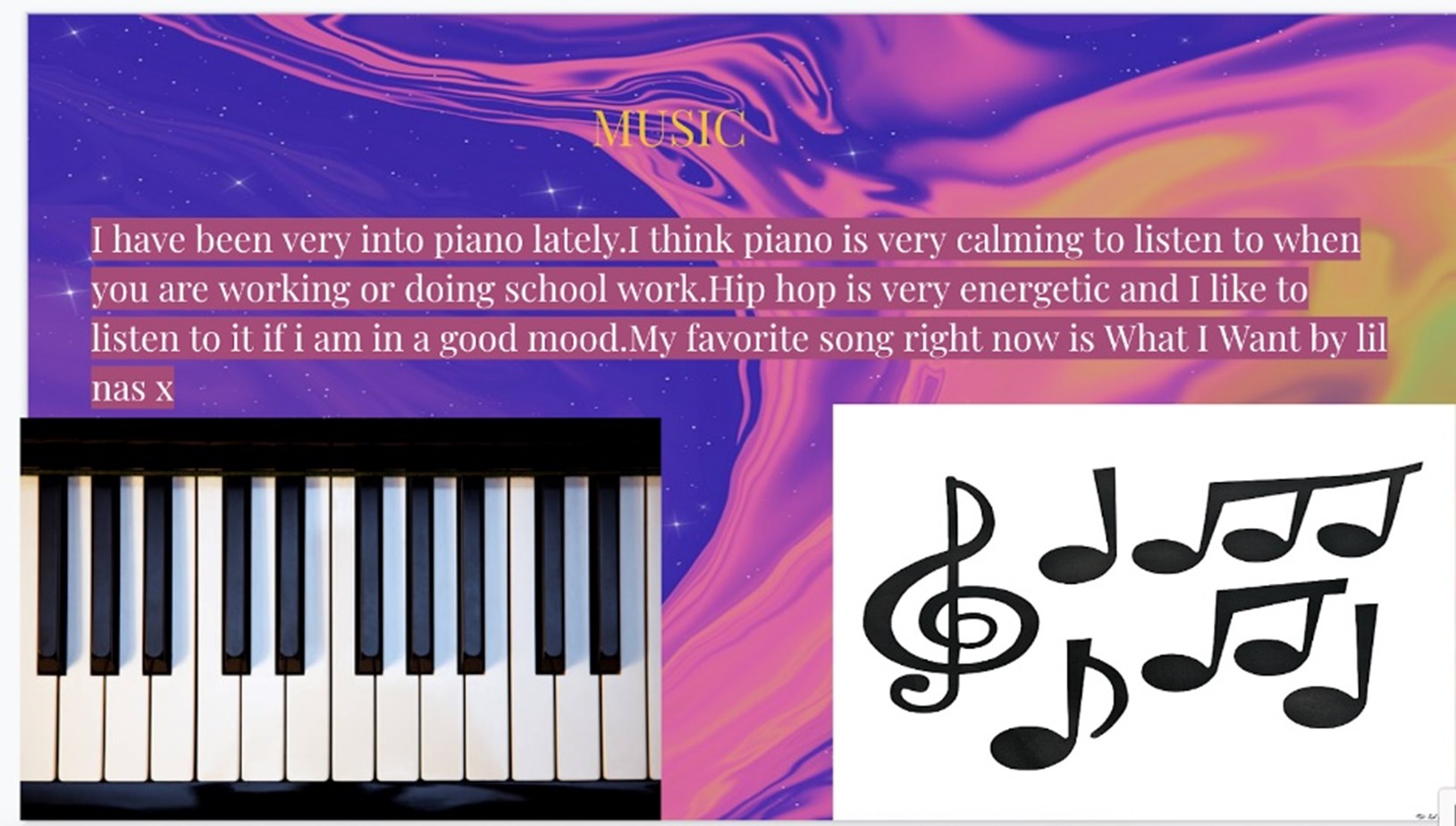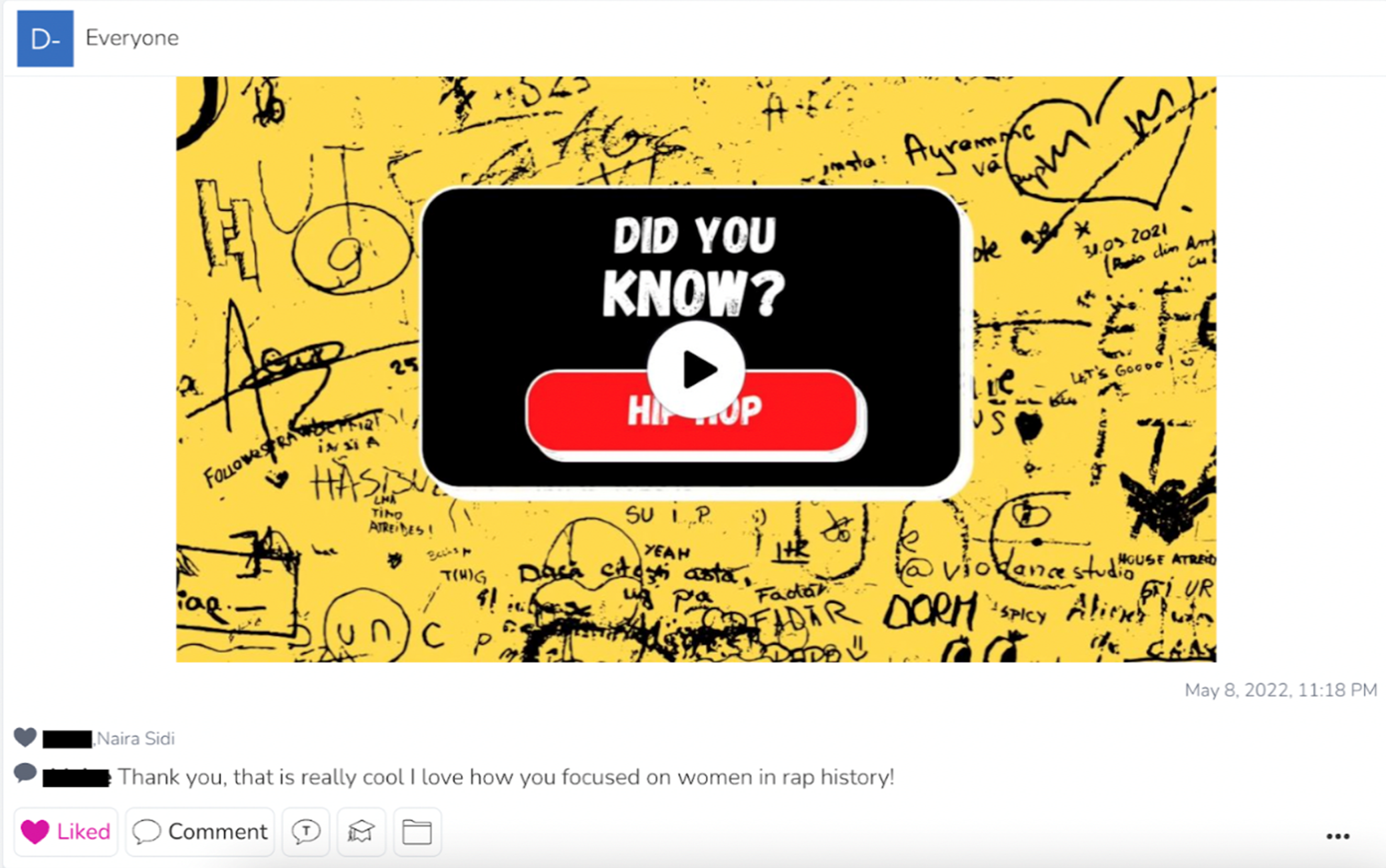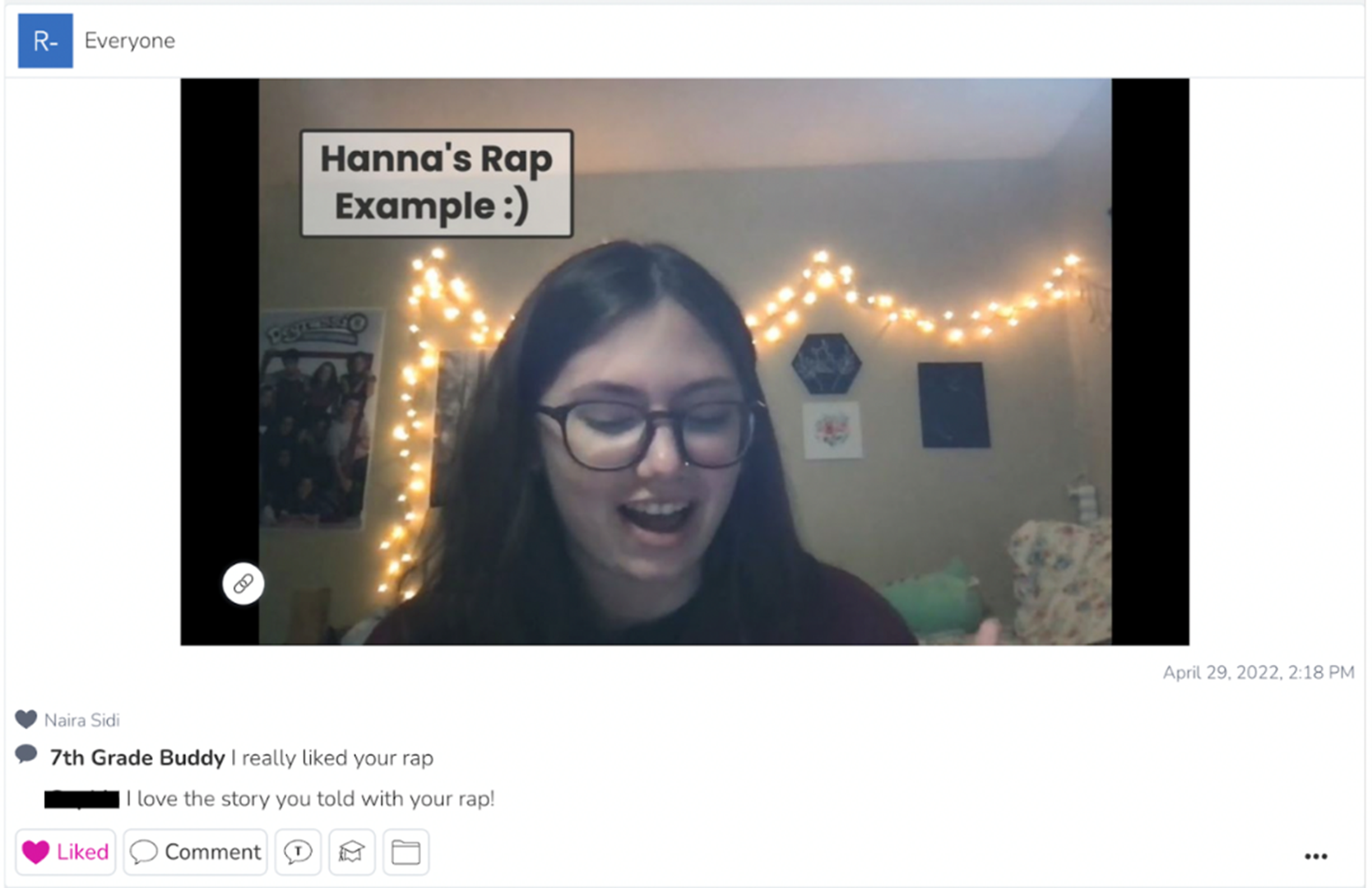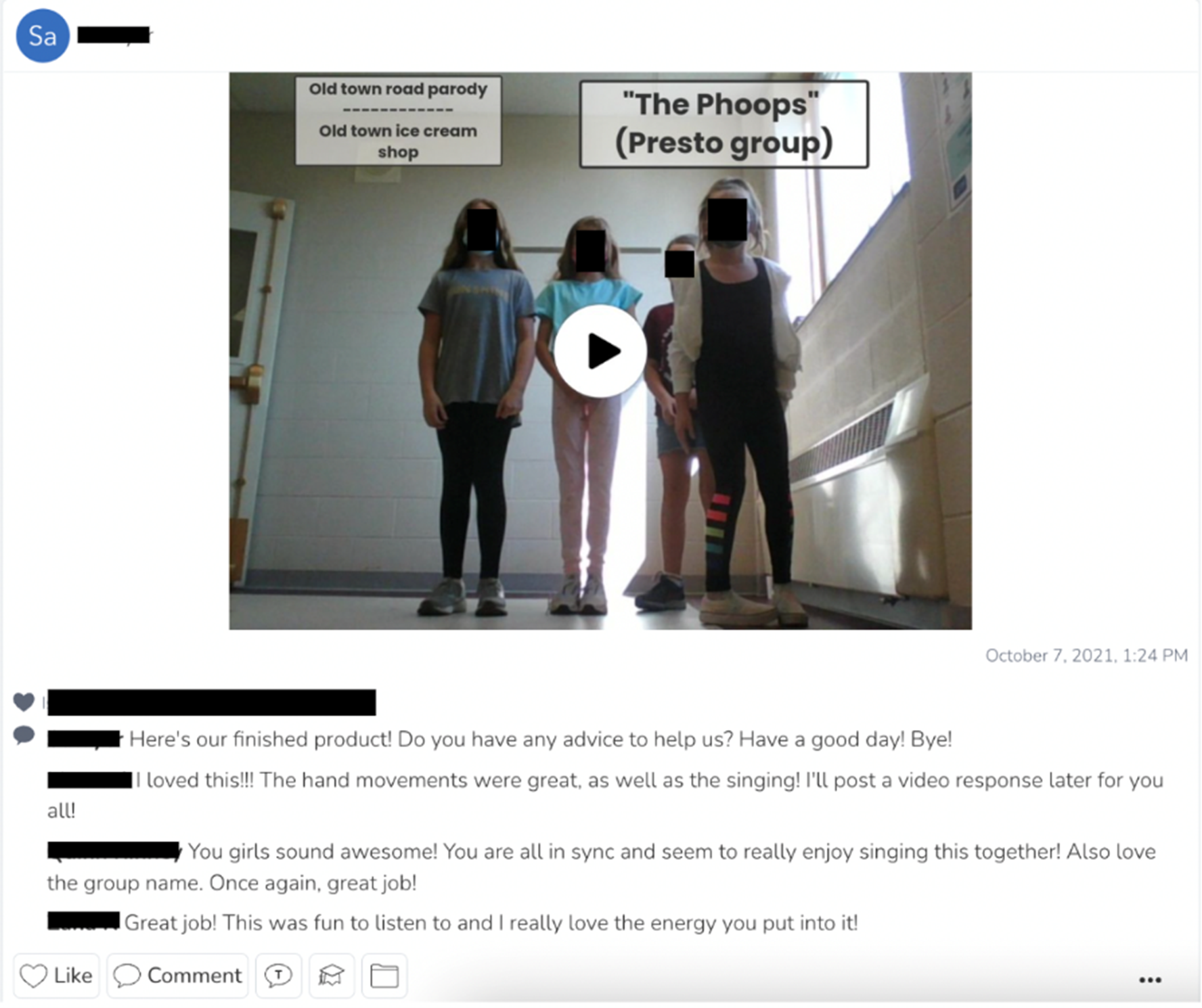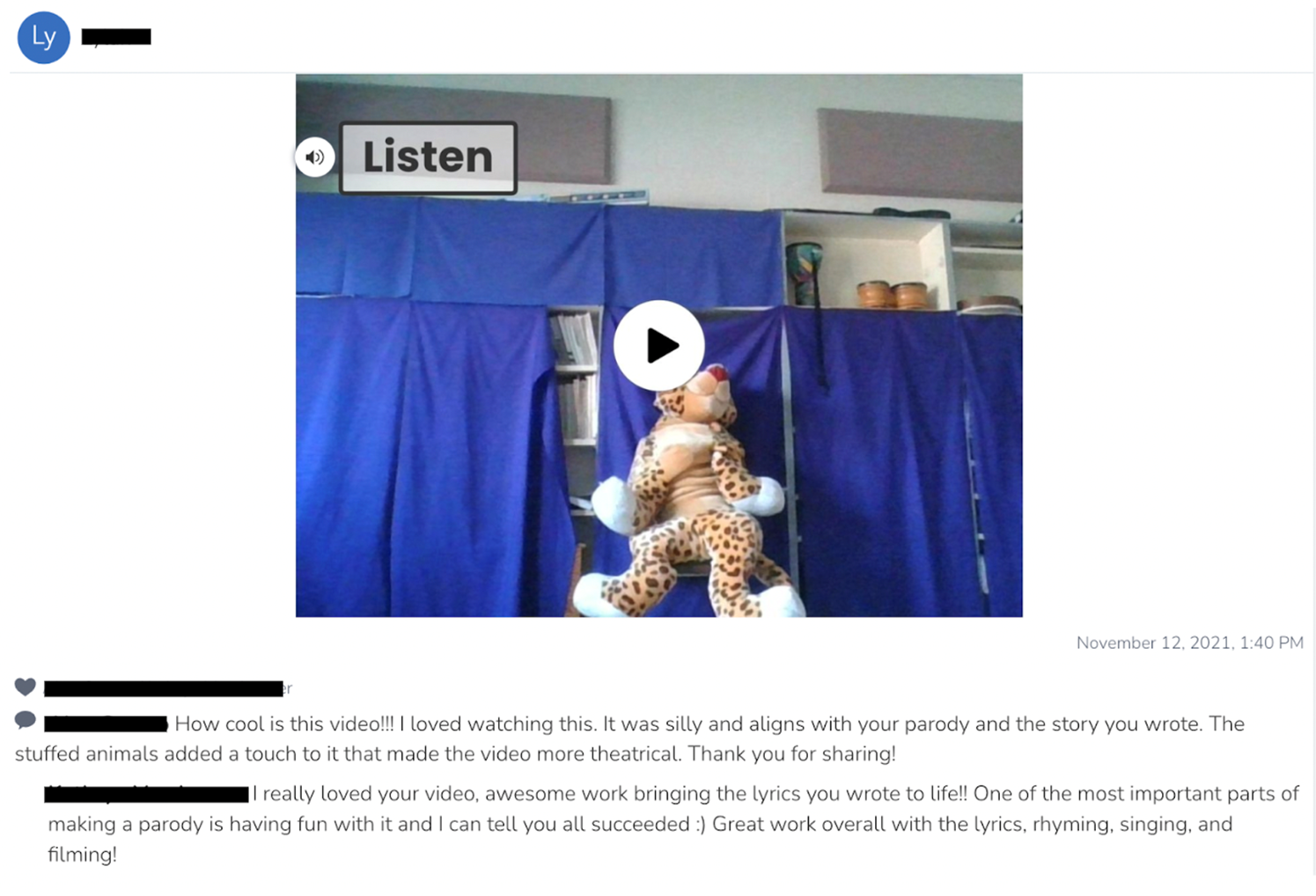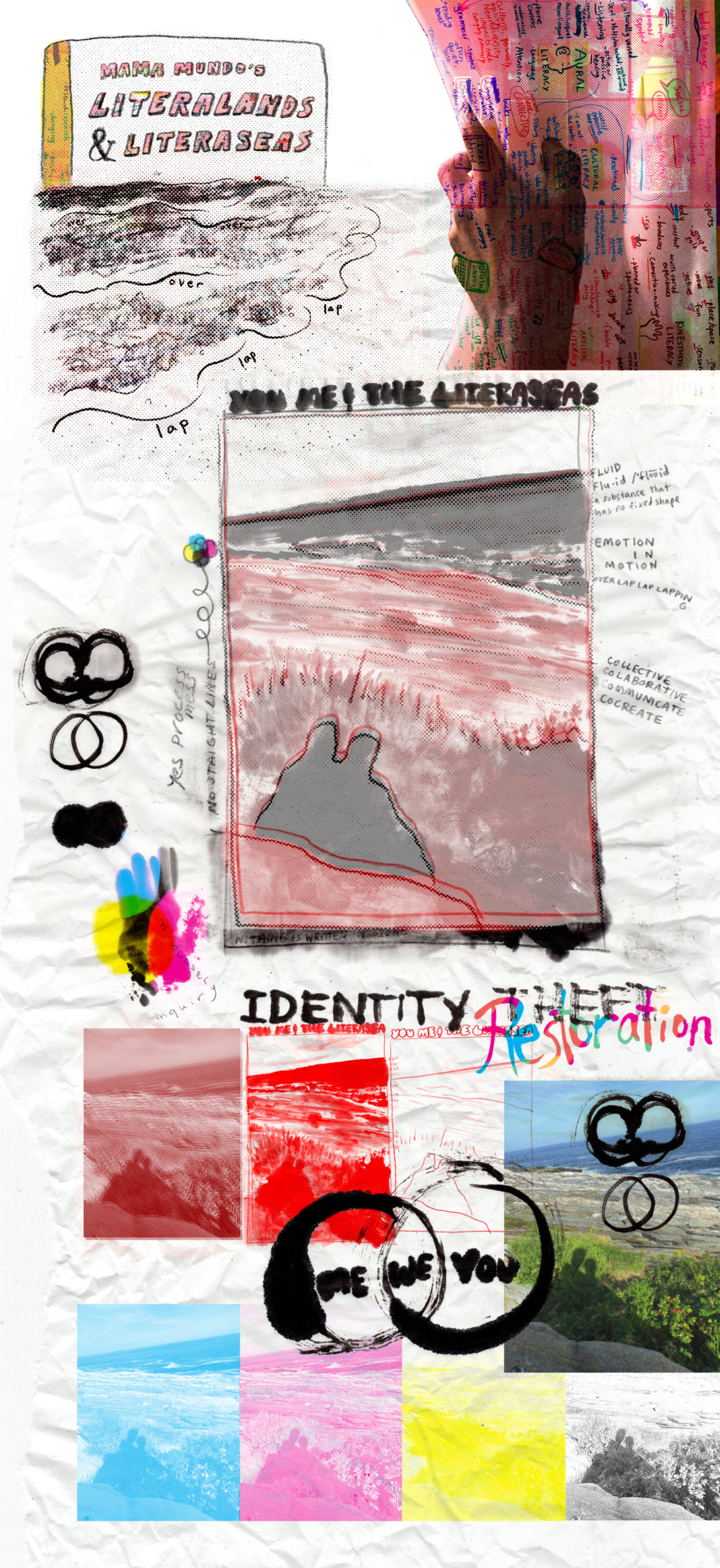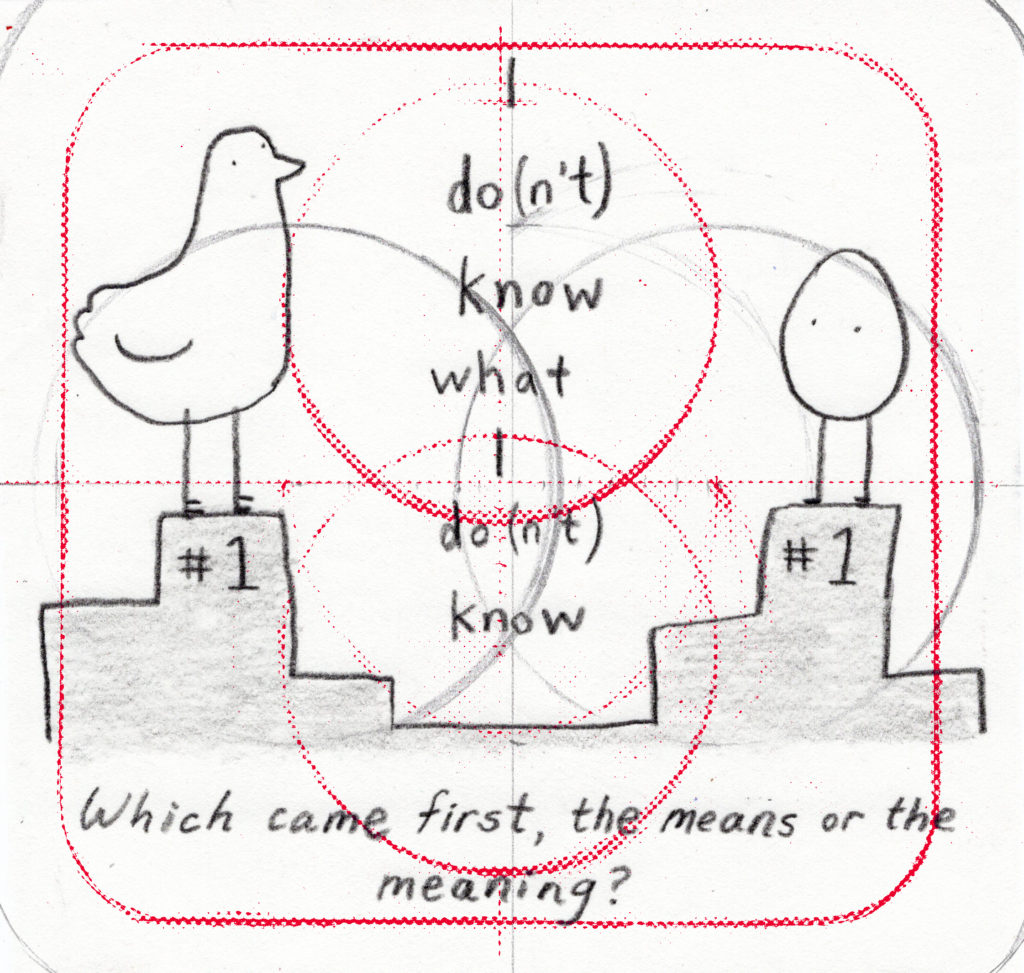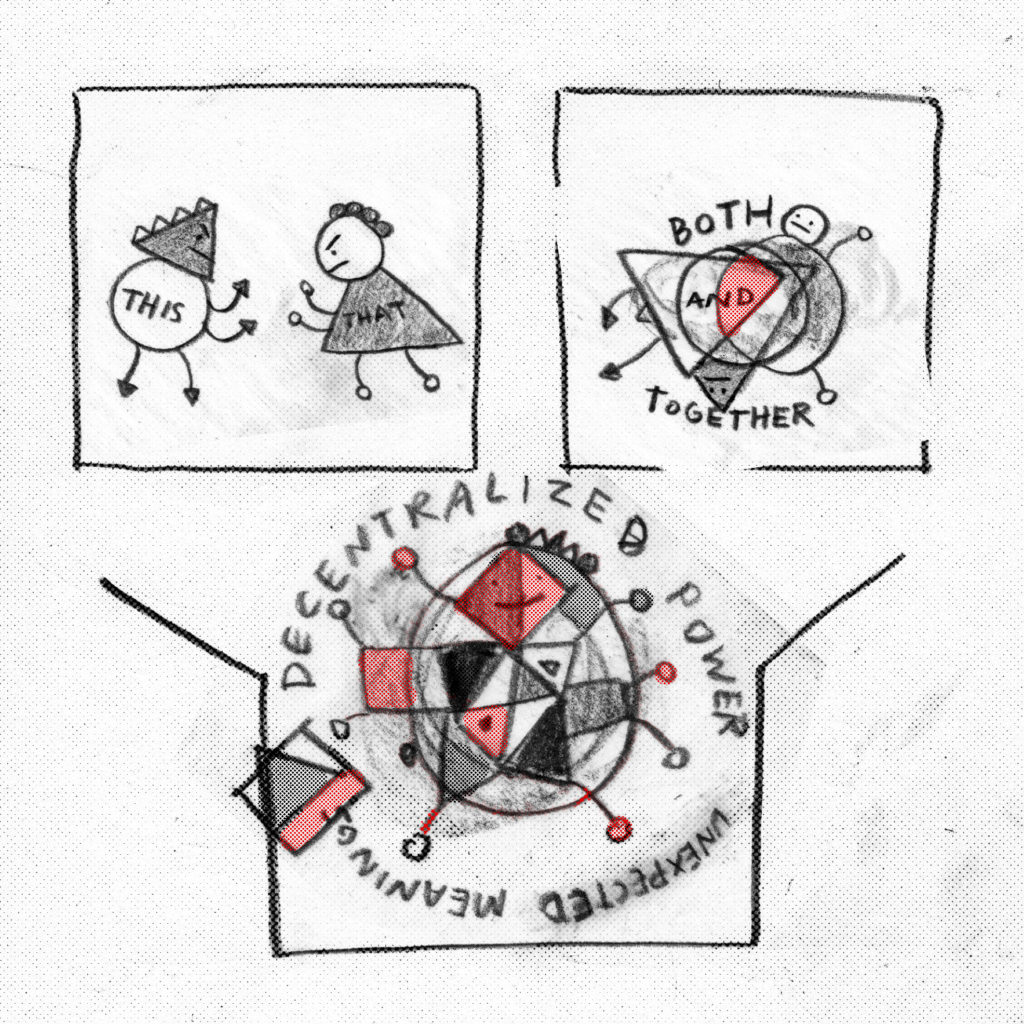Virtual Mentoring Through Storytelling and Hip Hop
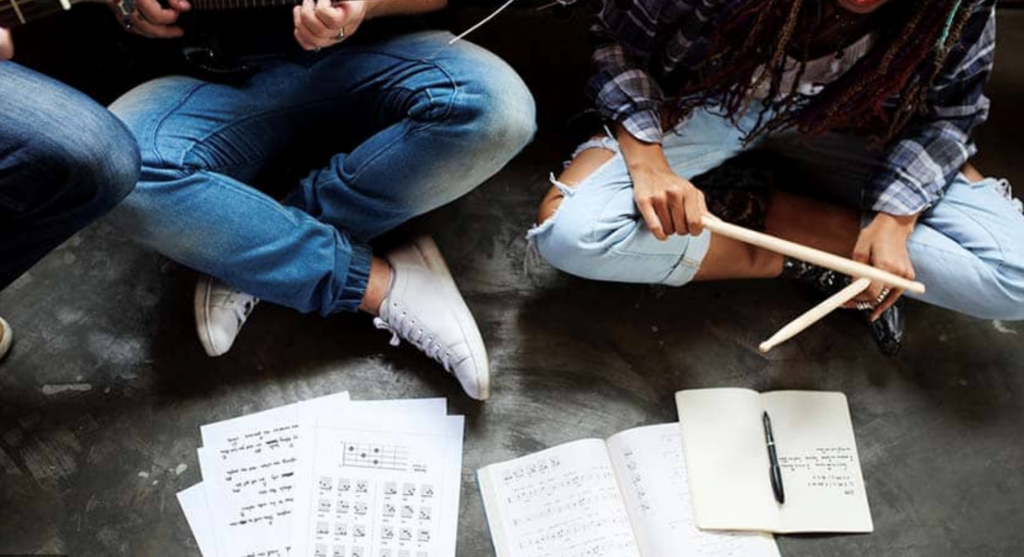
When we think of literacy within music education, many of our conservatory-trained minds jump to a Western-notated staff: Every Good Bird Does Fly, four 16th notes in a quarter note and loosely translated Italian terms. But being “musically literate” can mean so much more than replication within a single cultural context.
What if literacy meant creating something new? What if music literacy meant:
- Directing a music video that tells a story.
- Changing the words of a song to alter a message.
- Manipulating sound to convey a chosen emotion, mood or message.
The Collaboration
In an effort to expand our understanding of music literacy, Dr. Marta Albert, Dr. Judy Lewis, and Naira Sidi designed two collaborative projects between fifth-seventh grade middle school students at Sackets Harbor Central School (NY) and pre-service music educators at SUNY Potsdam.
Storytelling Project: In conjunction with Dr. Albert’s Literacy Education and the Arts Disciplines course, this project involved making listening maps and creating parodies to a song of choice. Students combined English language arts (ELA) knowledge — narration techniques, figurative language and syllable use — with musical ideas to create a new product.
Hip Hop Project: Driven by Dr. Lewis’ Secondary General Music class, this project allowed students to create raps, experiment with rhyme schemes and perform spoken word to a beat.
We used Seesaw as our virtual platform to exchange ideas in these projects. Seesaw allowed students to show and share work through video, pictures, text and/or audio. Each week, college students posted assignment prompts, models and feedback for the middle school students. It was easy for students to show complete work (or incomplete ideas) throughout the process. Click through the slider below to see screenshots of interactions on the platform.
Key Findings and Benefits
Digital Technology: Undergraduate students developed critical tools for incorporating digital technology into the music classroom. This included using pre-recorded “infomercial” videos to introduce the younger students to musical topics, guiding and facilitating student use of digital composition technology, and a blog as a tool for critical reflection on the part of the middle school students. As a result, the middle school students also developed digital technology skills as a powerful tool for music learning.
Hip Hop: Hip Hop is documented as the most listened to musical genre of middle and high school students worldwide1. Through participating in the Hip Hop unit on Seesaw, the sixth and seventh grade students were offered the opportunity to engage with and create original music in this impactful genre. Given that music teachers-in-training are not given a lot of tools for incorporating Hip Hop into their classroom curricula, the undergraduate students in this cooperative endeavor were given a first chance to explore Hip Hop pedagogy with adolescent music students.
Literacy Concepts: The middle school students learned new vocabulary and wrote in several genres for authentic audiences. They also developed reading fluency through repeated, shared and choral readings of songs by artists they love, as well as their own compositions. The college students gained insights into reading and writing concepts and strategies to enhance literacy learning.
Conclusion
- Music literacy became a rich, tangible concept for pre-service educators to incorporate into their curriculums.
- Pre-service teachers interacted with and guided K-12 students aside from practicum experiences.
- Students at Sackets Harbor Central School received feedback from multiple perspectives.
- The middle school students created original songs and raps. They combined words and musical ideas into messages that meant something to them.
- Pen-pal relationships began to form through back-and-forth dialogue. The college students continued to mentor the middle school students, answering their questions about college and giving them a glimpse at life after high school.
The combined perspectives of middle school students, undergraduates, two professors and a K-12 teacher sparked a link between literacy and music learning. By the end of these projects, music literacy was not just regurgitation; it meant creating, understanding and encoding messages within multiple cultural contexts.
1Shabazz, R. (2021). “We gon be alright:” Containment, creativity, and the birth of hip-hop. Cultural Geographies, 28(3),447-453

